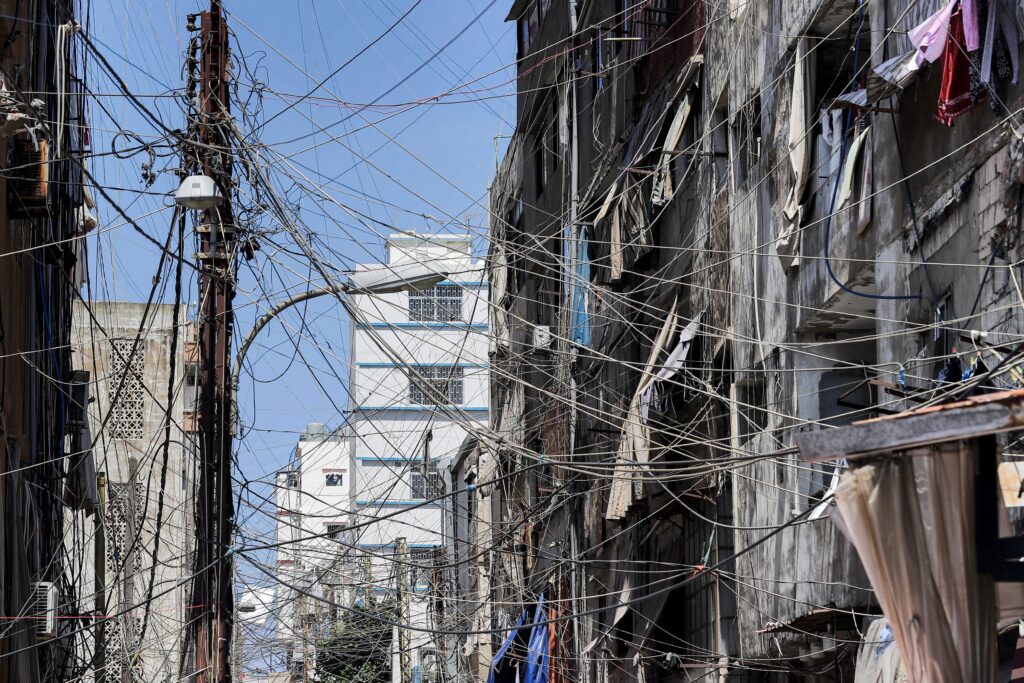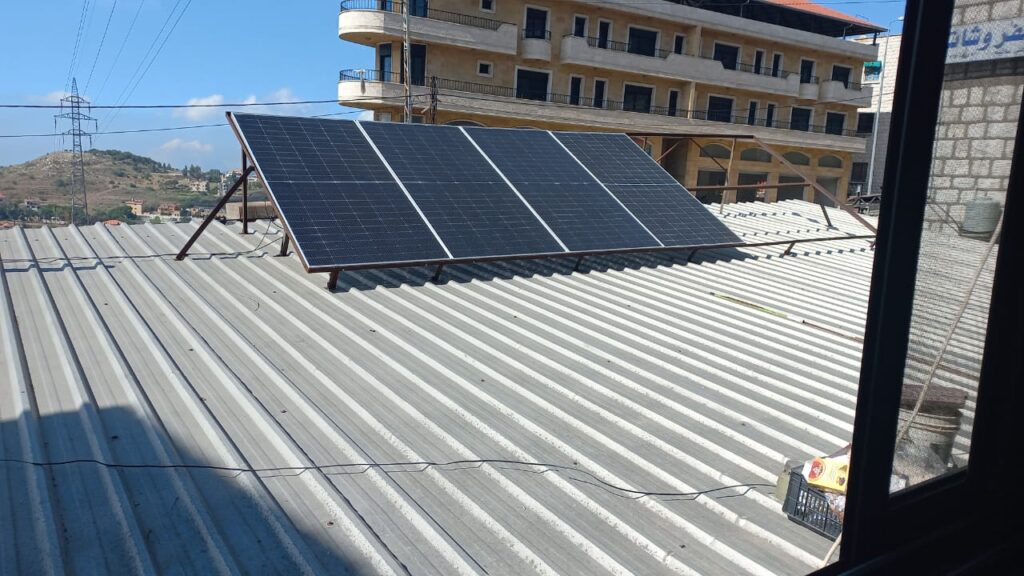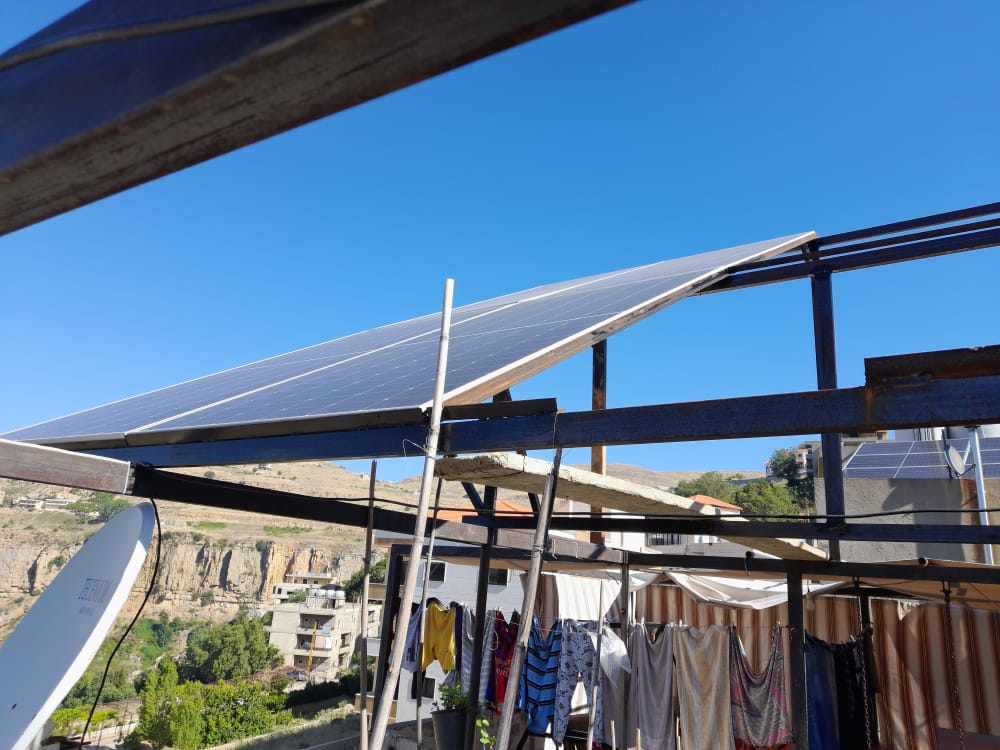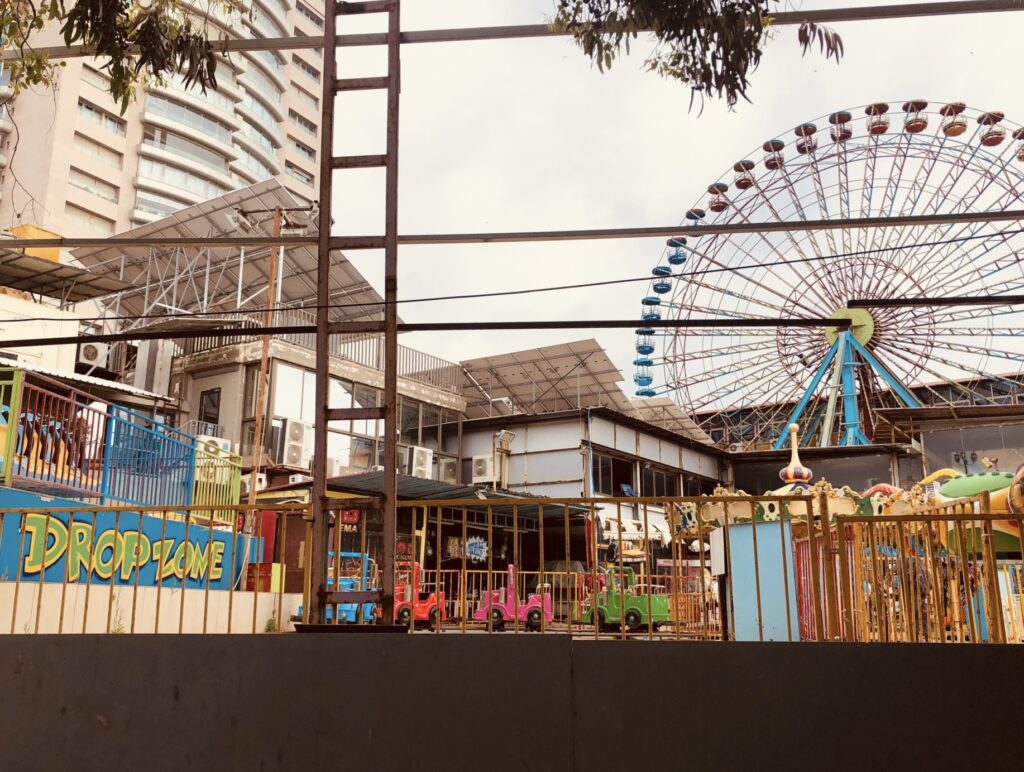In Lebanon, Solar Power Is Booming. Why?

I recently returned to Lebanon, where I have been doing ethnographic research for more than a decade, after an absence of several years. In the intervening years, the pandemic emerged, the country’s economy collapsed, and Lebanese united in the streets to call for the removal of the government and reform of the sectarian and corrupt political system.
The landscape I knew so well showed signs of the turmoil. With tourism in dramatic decline, hotels were shuttered. Downtown Beirut, site of the October 2019 protests against the government, was emptied of people and full of boarded-up windows and walls emblazoned with graffiti. When I checked into my Airbnb rental in the upscale Achrafieh neighborhood, the apartment’s owner explained that one of the expansive windows that lined the main living space had not shut properly since its repair following the August 2020 Beirut port explosion three miles away. He picked up a small chunk of glass from the window’s frame and handed it to me. “Here,” he said wryly, “this is your souvenir from the explosion.”
This seventh floor window wall provided a panoramic view of a lively Beirut neighborhood filled with other apartment buildings and high-rises. But at night, the sight of these buildings had a chilling effect: They were all dark.
In recent years, amid soaring inflation, unemployment, and poverty rates, Lebanese have faced devastating electricity shortages. But as I settled in, I began to notice something I’d never seen before in the city: Solar panels were popping up everywhere. From the rooftops and verandas of residential buildings to commercial establishments, people were now sourcing their own power to light up their homes and businesses.
What had led to this solar boom?
In the 1990s, the Lebanese government began borrowing from internal and external sources to finance reconstruction after the country’s devastating 15-year civil war (1975–1990). Today Lebanon’s national debt has become massive, at US$85 billion—nearly half of which has been spent on the electricity sector.
Over the years, political actors with vested interests across the fossil fuel–dependent electricity supply chain have paid large subsidies to the state-run electricity company, Electricité du Liban (EDL), using Lebanese depositors’ money. These corrupt actions contributed to the collapse of the lira, the nation’s currency, which has lost 90 percent of its value in the past three years. U.S. sanctions on Syria have further exacerbated the problem by making it difficult to import energy resources from other nearby countries, such as Egypt and Jordan.
Now teetering on bankruptcy, the government has found that it can no longer afford to import or subsidize fuel. While EDL has suffered from supply shortages for decades, in October 2021, the country’s power plants ran out of diesel fuel completely and caused a nationwide blackout. For over a year now the company has only been providing a meager two hours of electricity per day.
As scholars working in the region have shown, state collapse has meant that many Lebanese have been forced to figure out ways of accessing basic services and provisions, including electricity. Many rely on costly and polluting diesel-fueled generators run by private suppliers. These suppliers, operated by a small group of businesspeople with ties to public officials and fuel importers, effectively manage a private electricity market and have become colloquially known as the “generator mafia.”
The electricity in the apartment I rented alternated between the minimal state-provided supply and supplemental generator power purchased by and provided to all the building’s residents. Just before I arrived in Beirut, the apartment owners messaged me to share the good news that they were now paying a generator supplier for an additional supplement that would raise the number of hours of supplied electricity from 16 to 24 hours per day. Living at the top of Lebanon’s electricity hierarchy meant I would have power in my flat when the rest of the building would not—a fact I would discover when confronted with the building’s nonworking elevator.
It’s within this context of people being responsible for sourcing their own power that the solar energy movement has emerged.
Many of the solar panels I noticed in Beirut were installed on upmarket and mid-range buildings. And yet, in a city marked by intense and visible class disparities, solar panels did not appear to belong only to the domain of the privileged. Sitting in traffic in the south Beirut neighborhood of Sabra, where generations of displaced people live in substandard living conditions and informal housing settlements, I saw solar panels on the roof of a ramshackle detached single-story concrete house.
The growth of solar panels was not a solely urban phenomenon, either, as I realized a few days later when I left Beirut for the mountains. At the home of a family friend in the village of Azounieh in the Shouf region, I ascended to the second-floor patio area and looked out at the view.
“Wow,” I said to my friend Younis (a pseudonym), “people have solar panels here in the village too!” He smiled and pointed at his own roof, where solar panels floated above the chicken coop and the clothesline.
Younis told me he had lost his job in home construction. Without power tools, the work was impossible, and generators were too expensive to run all day. Younis described how living without electricity had strained his whole family. Even water was often unavailable because electricity is generally needed to pump water up to apartments in Lebanon. “You feel the pressure, when you come home to a dark house and you see the lights on at the neighbor’s,” Younis told me. “I felt bad. The kids couldn’t get onto the Wi-Fi; there was no hot water; I had to do something.”
To afford the panels, Younis had obtained a loan for US$3,500 directly from a private solar panel company. Though the government also offers loans for solar panels, they only offer financing using Lebanese lira. “But the lira is so unstable,” Younis explained. “People could end up paying double for them.” The solar panels, he said, even though he is financing them, have eased the immediate pressures on his family.
Back in Beirut, I noticed sparks flying on a veranda across the way one night. Concerned there might be a fire starting, I walked over to the wall of windows in the living room area and saw that workers were putting together a metal frame. The next day they used a pully to hoist up solar panels for installation.
How were the panels being paid for? I wondered. And how would the power they provided change the daily routines of the apartment’s occupants?
It’s tempting to celebrate the growth of solar panels as one more story of Lebanese resilience—or one of environmental triumph. But the solar panel movement is really a story about people being increasingly forced to take on the financial responsibility of procuring basic services that the failing state has denied them.
Lebanon’s solar panels, in this sense, capture the immediacy and intensity of what the World Bank has named one of the world’s worst economic crises since the mid-19th century.
Still, there is, undeniably, something brightening about Lebanon’s solar panels. As Younis’ story reveals, the panels are a double-edged sword: In financing their own solutions to economic and political breakdown, many Lebanese are becoming further burdened by debt. But by enabling people to power their households, solar panels have also helped restore some normalcy and alleviate hardship—allowing people to reclaim dignity lost during the country’s collapse.




































